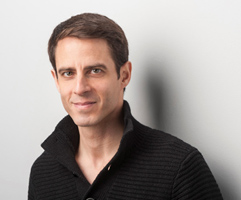You’re about to discover the key facts about the be-do-have model – and why it’s so effective.
This is a concept I’m regularly explaining in my role as a life coach. I’m excited to share it here to help more people build more fulfilling lives.
So, let’s dive in.
Be-Do-Have Explained
1. What Is The Be-Do-Have Model?
Be-do-have is a mindset regularly recommended for people who want success in achieving their biggest goals.
2. What Does Be-Do-Have Mean?
The order of the model is important. It encourages people to first focus on who they have to be to reach a specific goal. Only then, should you consider what you need to do to succeed. And afterwards, what you will have as a result.
3. Be-Do-Have Examples
Ana wants to be a best-selling author.
Under this model, she’d first need to consider what type of person succeeds in this field. Perhaps she concludes that it’s someone who is disciplined, focused, creative, imaginative and passionate about their work.
Next, she’ll decide what she needs to do to become that person. Writing a set amount of words per day should improve their discipline. There are plenty of exercises to improve your focus, while there are coaches who teach people how to be more creative too.
Finally, they can daydream about what the person who takes these specific actions will have.
Mark wants to marry a famous fitness model.
First he’ll need to consider what type of person he’d need to be to attract one. You’d imagine he’d need to be relatively fit, successful and high-status himself, right? An attractive personality too. So, what would he need to do to become that person? And what would he have as a result?
Related: What Are Examples Of Effective Team Dynamics
4. Be-Do-Have Mentality
The Be-Do-Have mentality is regularly taught because the average person considers the three aspects the wrong way around.
A lot of people believe that the more they do, the more they have, the happier they’ll be. The problem here is that this person’s self-esteem is often based on how much work they do. This is a recipe for becoming a workaholic who burns out and exhausts themselves. Also, as many successful leaders can testify, having more things rarely makes you fulfilled or happy on its own.
Another harmful mindset is that once I have this, I’ll do this and then I’ll be happy. This is adopted by excuse-makers who don’t have the perfect circumstances to get started on the path to the life of their dreams right now. Ironically, if they focused on the being first, they’d probably find a way around these excuses.
5. Why Is The Be-Do-Have Mindset So Useful?
A simple explanation is that it’s the most effective way to live the life of your dreams.
If you start doing all the actions of a successful life coach, for example, but you don’t have the personality traits of one, you’re unlikely to succeed in your job.
If someone gifts you a thriving life coaching practice, but you haven’t embraced what you need to be or do to succeed as a life coach, you’ll struggle to attract more clients and probably lose those given to you.
When you become, it becomes easier to do. Then, soon enough, you can access the things you want to have.
Related Content: BEST Life Coaching Business Models To Start Online
6. The Be-Do-Have Mindset Is Great For Self-Esteem
The Be-Do-Have mindset can work wonders on your self-esteem.
Most people adopt the mindset of “I’ll be happy when I have X” or “I’ll be happy when I’m doing Y”. The traditional focus is on outcomes and what we want to achieve, not who we want to be in our lives. But there are a few flaws in this thinking that can limit your access to happiness or being fulfilled.
For starters, it can sometimes take a long time to get the resources we want. Plus, the joy of getting them is often quickly replaced with a desire to have something even better.
The “I’ll be happy when I’m doing” mindset is more in your control, but it could also take a long time, depending on what you want to do. Even then, it’s going to be difficult to build a life where you’re doing that certain thing all the time.
So, with both of these mindsets, you’ll have a long wait for what’s likely to be fleeting happiness.
But what if you chose to base your happiness on who you were, rather than what you achieve or what you have?
That’s more useful, because you can choose to behave differently and start embodying your heroes at this very moment. You can practice being kind, generous, hard-working or adopting any other qualities you want right now.
The Be-Do-Have mindset can have a profound impact on your ability to live a life that’s aligned to your values. In doing so, you can create an empowered state and true sense of self-esteem today.
Related: Group Polarization – 11 Strategies To Avoid It (Backed By Science)
7. Be-Do-Have Model For Business Leaders
The Be-Do-Have model is essential for any leadership role. First and foremost, you have to start authentically embodying the qualities of a strong leader, or no-one will follow you.

There are plenty of business scenarios that go the other way, when someone is bestowed a leadership position despite having poor leadership skills. This person has followers and does the job at hand, but struggles to win compliance from their followers. He’s a business leader without the ability to lead, and will ultimately fail in his role.
Related Content: Integrated Leadership: Ideas To Be A Better Leader
But what about the employee who doesn’t have a leadership role, but embodys the qualities of a leader? The guy who has energy and passion who talks the talk, cares about his colleagues and offers support? The fun guy who can create a family-like commitment in his team?
People will follow that guy more willingly than their existing leaders. Soon enough, his seniors will have no choice but to promote him.
Related Content: The GRPI Model for Effective Teams – Easy Explained
8. Be-Do-Have Model For Making More Money
You’ll notice that any decent book about making money will focus heavily on mindset.
That’s because your self image will determine:
- how inspired you are to make your wealth increase exponentially;
- how much money you’ll save vs spend and invest;
- how much passion you exude when you build relationships;
- how you’ll jump the hurdles that life creates;
- how likely you are to reach your full potential;
- and more.
You could be handed a thriving business that makes tons of money, but if you haven’t learned the traits of an intelligent business leader, you’ll lose it all. You could win millions of dollars, and lose it all without the right self-image. Why do you think so many lottery winners end up broke?
So, stop wishing for more money. Instead, wish to develop the traits of a wealthy person. Once you have those traits and start doing what they do, you’ll eventually achieve the same life outcomes as them.
Related Content: Skill vs. Will Matrix – A Magnificent Management
9. Who Should Use The Be-Do-Have Mindset?
As you can see, this model isn’t just for business success. I used an example of how it creates relationship success with Mark earlier. Plus, I explained how it can create the desired states of self-esteem within you. No matter what you want in life, it helps to consider and become the type of person most likely to get it first.
That’s a clear sign that the Be-Do-Have model could be utiltised by anyone.
Related Content: Cog’s Ladder Easy Explained Including Its Stages
10. Who Created The Be-Do-Have Model?
Ram Dass, the spiritual teacher, psychologist and author, is most widely credited for creating this model. However, Stephen Covey is also credited for having brought the idea to mainstream consciousness with his book ‘7 Habits Of Highly Effective People’.
11. Be-Do-Have Model Origin
Most likely, there were people who decided they should adopt the personality traits of who they want to be, before they focus on doing what they do or having what they have. Ram Dass appears to be the first person who put this idea into paper though. Nowadays, anyone with a coaching practice is likely to explain the model to clients in their own way
Related: Ways To Credible Leadership
12. Be-Do-Have NLP
Be-Do-Have is often associated and used with neuro-lingustic programming (NLP). Indeed, you can expect to learn about this when training for a coaching career too.
Any Questions?
I hope this guide inspired you in a profound and fulfilling way – and that you had as much fun reading as I did writing it. That was my goal when I decided to write about this topic.
Perhaps now you understand why we’re called human beings, not human doings.
If you have any relevant questions about this topic, feel free to write them in the comments section below.
It would mean the world if you were to join the conversation, and I’ll try to support you to the best of my ability.
